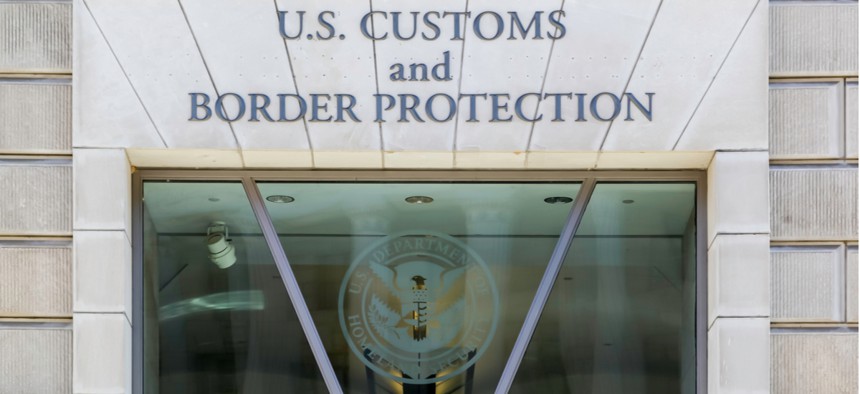How CBP Plans to Spend—and Repay—Its $15M Modernization Fund Loan

JHVEPhoto/Shutterstock
Agency officials already completed the first phase of modernizing the nation’s second-largest revenue collection system but needed an infusion of cash to keep the momentum going.
The Customs and Border Protection agency has one remaining COBOL-coded mainframe application left in its portfolio and just got a $15 million loan from the Office of Management and Budget to finish moving the system to the cloud.
Parts of the Automated Commercial System, or ACS, have already been migrated over to the new Automated Commercial Environment, or ACE, a set of modules hosted in an Amazon cloud.
CBP completed the first release of its modernization effort in September 2019—at a cost of about $10 million—which allowed the agency to begin routing about 90% of its collections through the new ACE system, Sonny Bhagowalia, acting assistant commissioner and chief information officer for CBP’s Office of Information Technology, told Nextgov in an interview.
The ACS—and, soon, the ACE—supports the second largest revenue collection in the federal government, behind only the IRS. Last year, the system collected more than $80 billion through taxes and fees on goods imported to the U.S.
As the aging system is retired, the remaining ACS capabilities will be turned off and replaced with a new suite of tools that will mirror all of the functionality in the old system, CBP IT officials told Nextgov.
But, “the last mile is the hardest mile,” Bhagowalia said, and the agency needed a quick infusion of cash to maintain momentum through to the end.
So, CBP IT and finance officials looked to the Technology Modernization Fund—a central pot of money loaned to specific agency projects to upgrade legacy IT systems. The fund is currently capped at $150 million—though there are efforts to increase that ceiling—with agencies repaying the loans over three to five years, making space for more modernization projects.
After about two years of work—including one rejection from the TMF Board, which asked the agency to refine its business case and reduce the amount requested—CBP was awarded $15 million for the ACE modernization program, marking the 10th TMF award so far and the first for a Homeland Security Department agency.
“It’s really a sweet victory and milestone for us,” Bhagowalia said.
Some of the programmers that coded the original ACS in COBOL 30 years ago are still at work at CBP, officials said, some of whom are waiting for ACE to come online before retiring themselves.
As CBP updated or moved its other systems to the cloud, ACS remained in an aging mainframe, coded in a 60-year-old programming language. CBP IT officials told Nextgov this was due to the system’s importance: They “didn’t want to just dive in without doing our due diligence” and risk leaving the agency—and the country—without a major source of revenue.
So, the agency was sure to take a “very deliberate approach,” according to an official in CBP’s finance office.
“It takes time to make sure all those processes and all that migration of information and how it works together is moved carefully. I think that was another reason why” CBP took its time replacing ACS, Bhagowalia said.
The cross-office team working on the modernization effort also wanted to ensure they used agile development processes that would allow for an early deployment of a minimum viable product and iterative improvements along the way.
They started by talking with stakeholders that use ACS to get an idea of the requirements and functionalities needed in the new system. From there, the development team created modules for each capability, with features and user stories to support and guide the work.
To date, that work has culminated in Release 1, in which CBP migrated data from ACS to ACE. Now, the team needs to finish developing the remaining capabilities and launch those modules in the cloud-based ACE system. That will require about $15 million, most of which will be used to hire contractor support for the development and testing process, CBP officials said.
The $15 million loan will be repaid over the course of five years, CBP finance officials said, starting one year from when the first funds are received. Bhagowalia said the funding will be coming to CBP in two installments, with the first expected to clear the final approval process in the near future.
The team expects savings from shutting down the last mainframe and other efficiencies gained from using cloud services will support some of the repayment. However, as a major money-maker for CBP and the federal government, CBP officials were not worried about being able to repay the loan.
While the agency could have used a working capital fund or other saving mechanism to pull funds together over time, Bhagowalia said the team did not want to lose momentum down the stretch.
“TMF gives us some benefit immediately because it gives us a quick infusion that we can then pay back,” he said. “It allows us to continue the momentum.”
Overall, Bhagowalia said the process for getting TMF funds was “tough but fair.”
He recommended other agencies interested in applying ensure they build a “professional team” to pitch the board.
“It requires a lot of partnership in terms of, not only the program stakeholders, but also the department—the department CIO and CFO, they were very supportive,” he said. “And you have to have a little patience. It does take a little time. But we were resilient and resolute, and had the fortitude and perseverance because we had a good case.”






